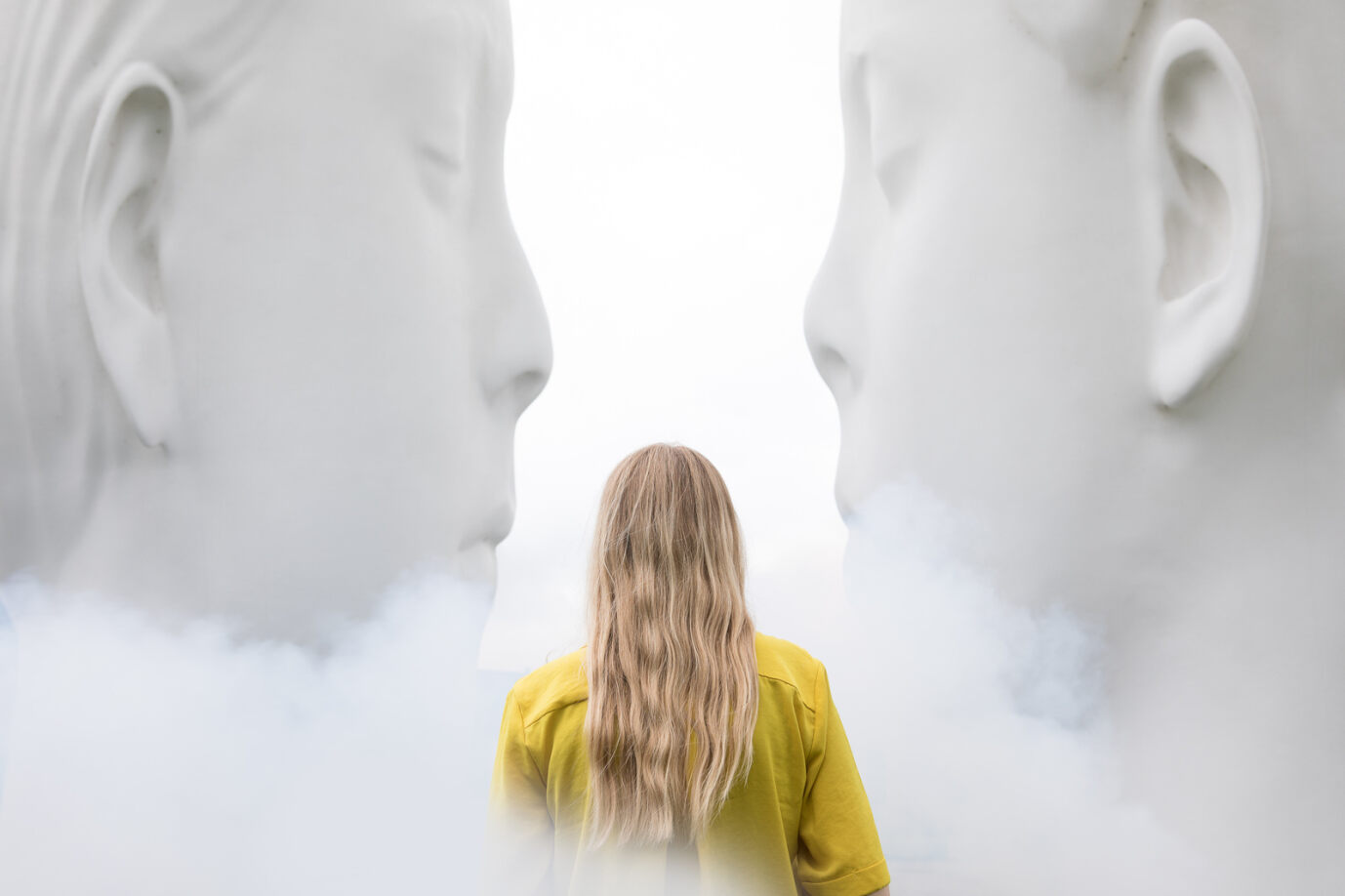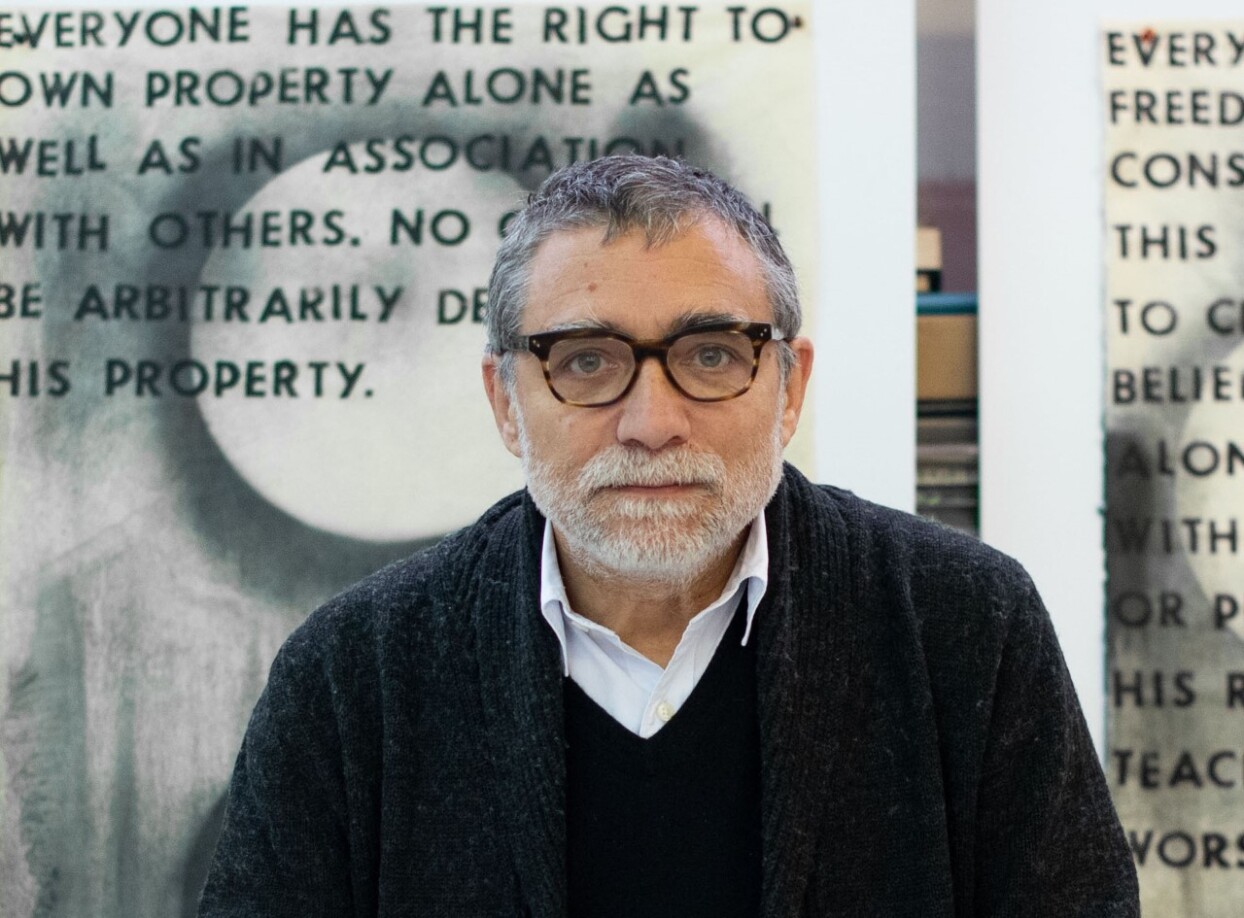
Blog: Young People Dreaming of the Future
by Art Curator Anna Tilroe
Almost immediately after its unveiling in 2018, the residents of Leeuwarden embraced the Love fountain. When an unknown “joker” later applied graffiti to the pure white artwork, it received heavy criticism on social media and in submitted letters. “Finally something beautiful in the city, and now it’s ruined again,” someone angrily wrote, and many reacted likewise. However, the damage was quickly repaired, and since then, the seven-meter high heads of a boy and a girl stand unharmed on the completely renovated Stationsplein.
“‘Finally something beautiful in the city’:” this must have sounded like music to Plensa’s ears despite the vandalism. Because it perfectly aligns with the mission the artist, born in Barcelona in 1955, has set for himself. “I want,” he told me during an interview, “to bring beauty to people with my art because it’s gone from society, and that’s a great loss. Beauty gives hope, and that’s what we desperately need in these confusing times.”

We conducted our conversation in his studio, an enormous semi-industrial complex in a village near Barcelona. It consists of various workshops where an extensive team constructs sculptures in various sizes and materials. For the really large sizes, works up to sixteen meters high being no exception in his oeuvre, there is a separate workshop. On the day of my visit, there was bustling activity—hammering, welding, and hoisting—to meet the numerous commissions. Because there is a high demand for Plensa’s sculptures worldwide. You find them in squares and parks of small towns and metropolises alike, as well as in the sea off Rio de Janeiro or on a hill near a former English coal mine. “I prefer making art for public spaces,” he told me. “More than in a museum or gallery, I can truly achieve what I want there: pay tribute to people with my art. And if it works well, it goes both ways. Because if people embrace a piece of art, art can become very powerful and important.”
We see how true this is in Leeuwarden. Whenever you pass Stationsplein, you always find people by the fountain or someone walking through the mist surrounding it. The selfies and wedding photos taken there are countless. But the artwork doesn’t only attract people because they find it beautiful; it’s also a tranquil spot in a busy environment. This tranquility is effortlessly conveyed through the serene expressions on the faces of the boy and the girl. With closed eyes, they face each other, as if lost in a dream. “Young people dream of the future,” Plensa explained, “and that atmosphere of hope fits beautifully with Leeuwarden for me. That’s why I dedicated the fountain to the youth of the city.”
All of Plensa’s sculptures have this almost meditative effect. Often they are portraits, mostly of girls and young women. “Because life hasn’t left any traces on their faces yet,” he said in response to my question. But for the Love fountain, he chose a boy for the first time too. His face, like that of the girl, is narrow and oval-shaped. It’s a technique he applies to many of his sculptures, which, combined with their closed eyes, contributes to the feeling of momentarily escaping the world’s bustle. This internalized atmosphere is further enhanced by the beautiful color and texture of the materials Plensa uses, such as marble, alabaster, and Murano glass for the smaller sculptures. For the large Love sculpture, the muscle-white coating of polyester resin ensures that the serene faces seem to illuminate, enchanting even during the evening. When mist swirls around the illuminated figures, leaving is difficult.
But why a mist fountain? Plensa told me how, during his first orientation visit to Friesland, he marveled at the mist he saw hanging over the fields early in the morning. “In Friesland, the water comes from the ground,” I thought then, “and that gave me the idea of a mist fountain.” Thus, the Love fountain is both a tribute to Leeuwarden’s youth and an ode from a Spanish artist to the Frisian landscape.

